How Irish Economic Breeding Index is improving dairy cow fertility
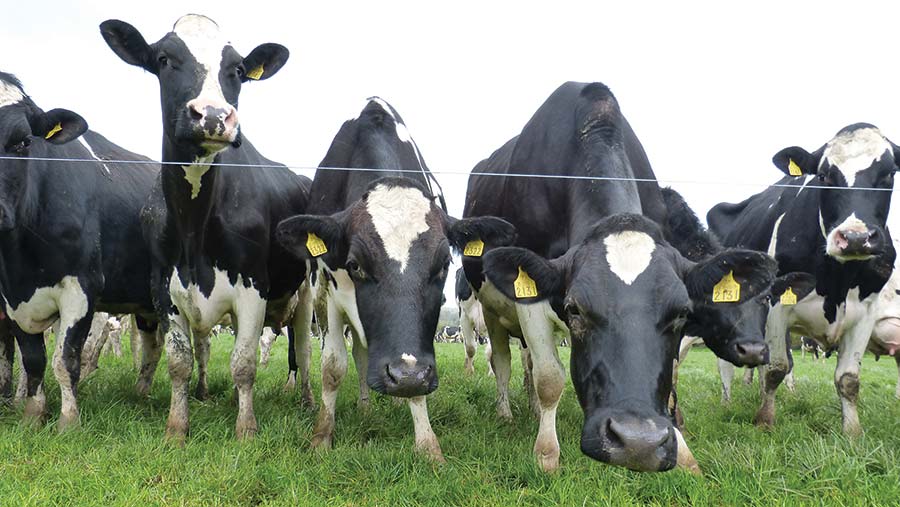
Fertility is improving in Ireland’s largely block-calving dairy industry despite tough growing seasons and ambitious herd expansion plans since milk quotas ended in 2015.
The average national calving interval has fallen since the Economic Breeding Index (EBI) was introduced in 2001, with the national average reducing from 403 days in 2011 to 389 in 2016, according to the Irish Cattle Breeding Federation (ICBF) – the organisation in charge of Irish beef and dairy cattle genetic evaluations.
UK farms also cut calving intervals by 14 days between 2009-10 and 2016. National Milk Records show a reduction from 428 to 414 days between 2009-10 and early 2016 in a much more all-year-round calving-dominated industry.
Three farmers in eastern Ireland are all strong advocates of the EBI system and opened their doors to an Ireland Genetics study tour to show why.
See also: Dairy conversion trebles output by focusing on milk from grass
UK v Irish index |
||
| UK profitable lifetime index (PLI) | UK Spring Calving Index (SCI) | Ireland Economic Breeding Index (EBI) |
| Production 32.2% | Production 29.3% | Fertility 35% |
| Fertility 20.3% | Fertility 21.3% | Production 32% (protein 18.6%) |
| Lifespan 14.4% | Maintenance 16.1% | Calving 10% |
| Maintenance 9.6% | Lifespan 13.5% | Beef 8% |
| SCC 9.1% | SCC 10.4% | Maintenance 7% |
| Udder 7% | Feet/legs 3.7% | Management 4% |
| Calving ease direct 1.6% | Udder 2.6% | Health 4% |
| Calving ease maternal 0.3% | Calving ease 2.6% | |
Fertility allows diversification into heifer sales
David Hannon, Tír Na Rí Farm, Derrypatrick, Drumree, County Meath
- 285 cows plus followers on 107ha at 2.87lu/ha
- 83ha grazing platform at 3.5lu/ha
- 5,460kg milk recorded yield at 4.56% fat and 3.61% protein at 118,000 SCC
- 446kg MS at 0.8kg:1kg cow bodyweight
- 370-day calving interval
- 600-750kg/concentrates a cow
- Manufacturing contract, Lakeland Dairies
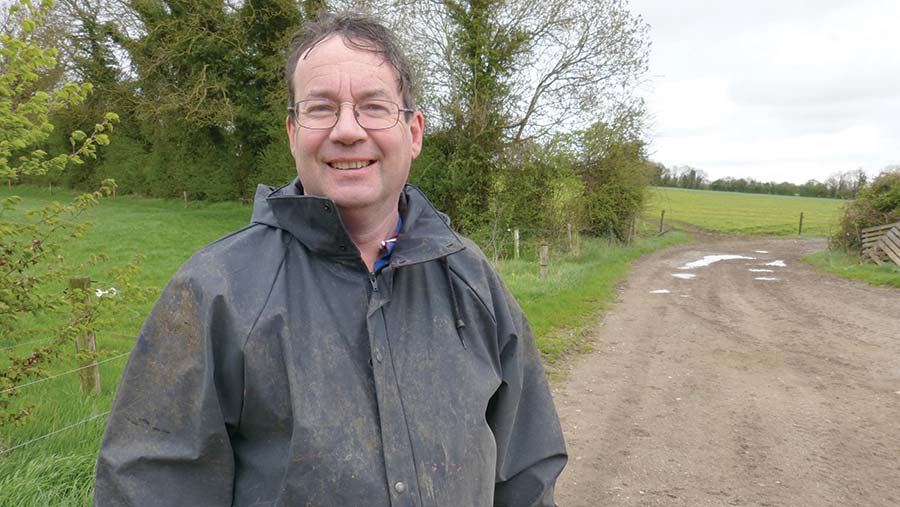
David Hannon
Spring-calver David Hannon has developed a reputation for high EBI heifers, which he has been able to sell for the past six years on account of his herd’s great fertility performance.
This is despite undergoing herd expansion, doubling cow numbers in 10 years and bringing the mean calving date forward a week to 17 February.
Calving in a 12-week block and hitting a calving interval of 370 days means he can cull cows through choice, not necessity, and can retain the earliest born heifers, selling surplus females.
Mr Hannon undertakes AI work on cows at home, while replacement heifers are contract-reared off-farm for €1.50/day (which includes feed, health plan and serving).
Beef bulls run with heifers for 12 weeks and for four weeks with the cows, accounting for about 10% of overall inseminations.
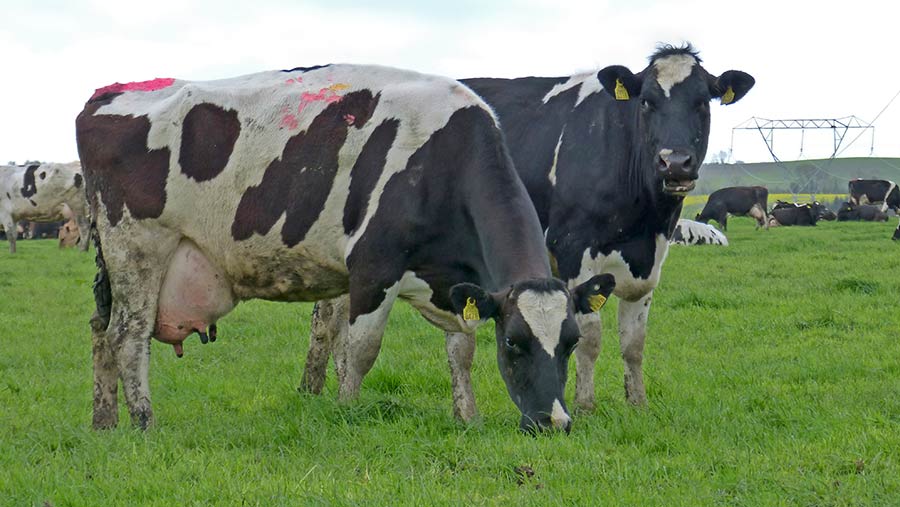
Robust, fertile cows that yield good milk solids are the goal of the Hannon family
Calf sales
The current high EBI status of the herd (€119) produced heifer calves last year with an EBI score of over €206, against a national average of €140-€150.
Mr Hannon prefers to serve more cows to dairy, selling about 35 heifers a year for £220-£264 a head and getting £70.33 a head for Friesian bull calves for export, rather than having Angus crosses going for £40-£131.
Breeding
The Hannon family aims to breed robust, fertile cows that yield good milk solids. The grazing platform is long and thin, meaning cows walk up to 3.5-4 miles/day.
This year’s six-week in-calf rate was at 85% in cows with a barren rate of just 5%. Meanwhile, the farm’s components are allowing the Hannons to make 4-5p/litre over base price (3.6% fat, 3.3% protein).
A simple three-week tail painting programme is used on cows, with all AI being natural on cows. Heifers are in an estrumate programme on the rearing unit.
Calving interval falls 14 days in four years
Kevin and Alan Meade, Deerpark, Slane, County Meath
- 270 cows plus followers on 137ha
- 85-97ha grazing platform at 2.79lu/ha
- 7,500kg milk recorded yield at 4.4% fat and 3.52% protein at 144,000 SCC
- 385-day calving interval
- 586kg MS at 0.9-1kg: 1kg cow bodyweight
- 1.9t concentrates a cow
- Producing liquid and manufacturing milk for Glanbia
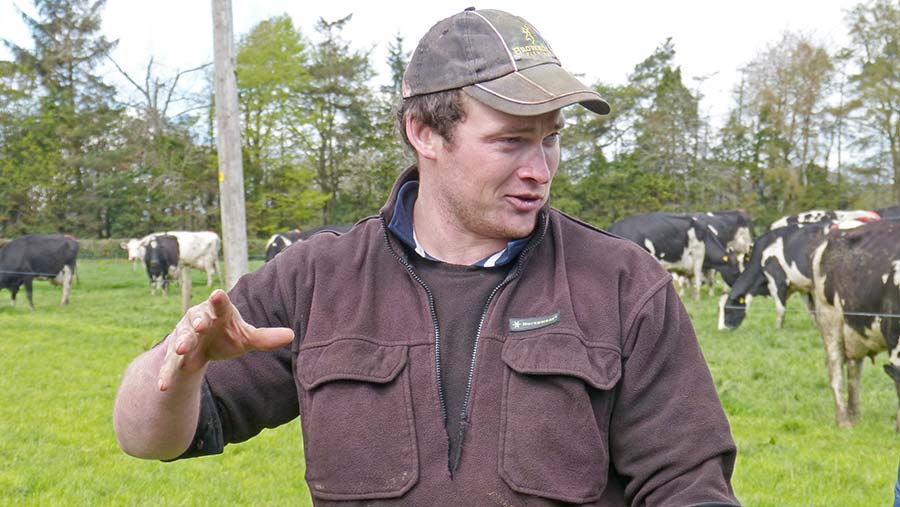
Alan Meade
Since 2014 the Meade family has increased herd size by 60% purely from homebred replacements while cutting 14 days off the calving interval.
Now at 384 days, the calving interval is artificially high due to retaining some cows that don’t hold service while the herd is being increased from 175 to 280, explain Kevin Meade and son Alan.
“We are increasing numbers by 5% this year to 290, but that will be the limit,” says Alan. “We are close to 1kg of milk solids to 1kg of cow liveweight and will look to tighten up the spring block to 12 weeks again after expansion is over.”
High EBI
A team of 12 AI bulls is used (over €120 for fertility), each one selected purely on EBI, provided it is -1.5 or better for type.
The Meade herd is served by Progressive Genetics AI technicians, using a simple tail-painting programme with no pre-breeding heat detection or pre-breeding checks.
The Meades run a 14-week spring block and a 10-week autumn block from September 20 (25% of the herd), producing both manufacturing and 1,110l of liquid milk a day.
Cows are managed and grazed in one group. The maiden spring-calving heifers are the only group naturally bulled due to them being far away in paddocks in spring and early summer.
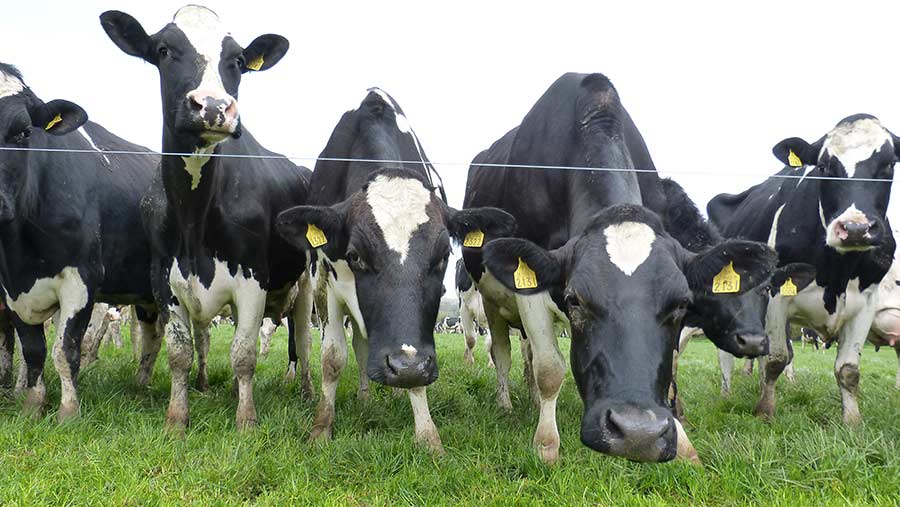
Cows at the Meades’ farm in Slane, Co. Meath
Longevity
Currently 25% of the herd is fourth lactation or higher. Mature cows are bred to be 580-600kg and are finished on pasture when barren, to make €1,050 deadweight.
Cows get a minimum of 3kg concentrate (16% crude protein) at all times. Autumn calvers get about 2t a cow and spring calvers get 1.25t a cow, although this was increased last year (1.9t/cow average) on account of higher stocking rates and a 10% drop in grass production.
Component lift worth £15,800 a year
Martin Quigley Farm, Inniskeen, Dundalk, County Louth
- 90 cows and 20 heifers on 43ha at 2.45lu/ha
- 30ha grazing platform at 3.5lu/ha
- 6,500kg at 4.32% fat and 3.59% protein at 123,000 SCC
- 390-day calving interval
- 518kg MS at 0.9kg:1kg cow bodyweight
- 1.4t of concentrates a cow
- Winter contract, Glanbia
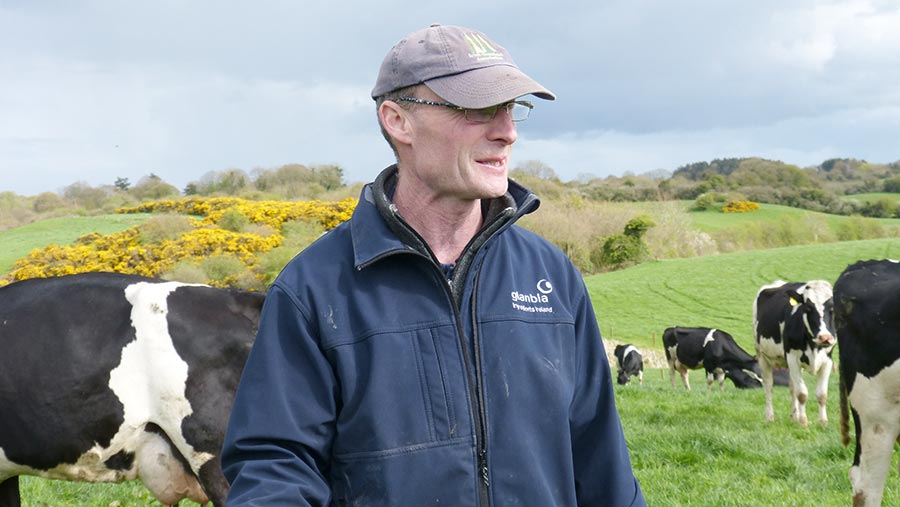
Martin Quigley
Lifting milk constituents has bolstered the income of autumn calver Martin Quigley, putting 2.6p/kg on his milk cheque.
In 2012, Mr Quigley’s EBI herd was producing milk at 3.91% fat and 3.33% protein, which increased to 4.32% fat and 3.59% protein by 2017.
Meanwhile, he has increased his herd from 70 to 90 cows, started genotyping and has seen his calving interval drop from 410 to 395 days over the same period, with 50% of the herd calved in four weeks.
“Herd expansion means we have added about five days on the calving interval for each carry-over cow,” explains Mr Quigley, who expects a sub-380-day interval when numbers peak at 100 cows.
Currently running cows around 570kg mature weight, Mr Quigley is targeting 1kg of milk solids per every kg of cow bodyweight, which he believes can be achieved in the future on account of last year’s heifers having an EBI of €186 and predicted to yield 620kg of milk solids as mature cows.
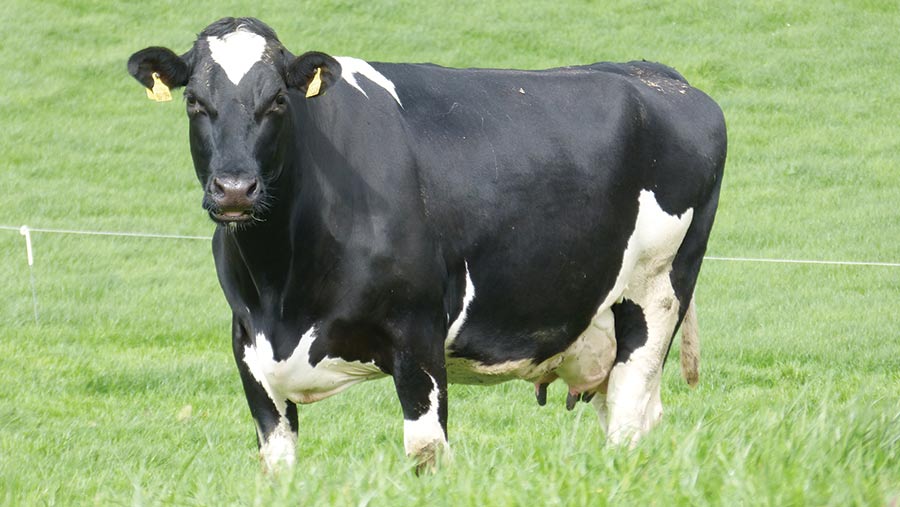
Cows are currently running around 570kg mature weight at Martin Quigley’s farm
Autumn block
North-eastern Ireland receives less rain (750mm) and colder winters than the southern dairying regions, meaning Mr Quigley opts for an 11-week autumn calving block. Much of the farm is 23cm of clay over shale, but still managed to produce 11.3tDM/ha of grass in 2017.
Mr Quigley oversees AI of the cows, while Progressive Genetics manages a synchronisation programme with the heifers.
“I’m more confident of having grass here in February than I am in July,” explains Mr Quigley, who has the option of drying off in July when cows are 270-280 days in milk.
“My top EBI cow is €213 and you can’t tell her apart from the rest,” he adds. “Without figures we don’t know where we are.”
